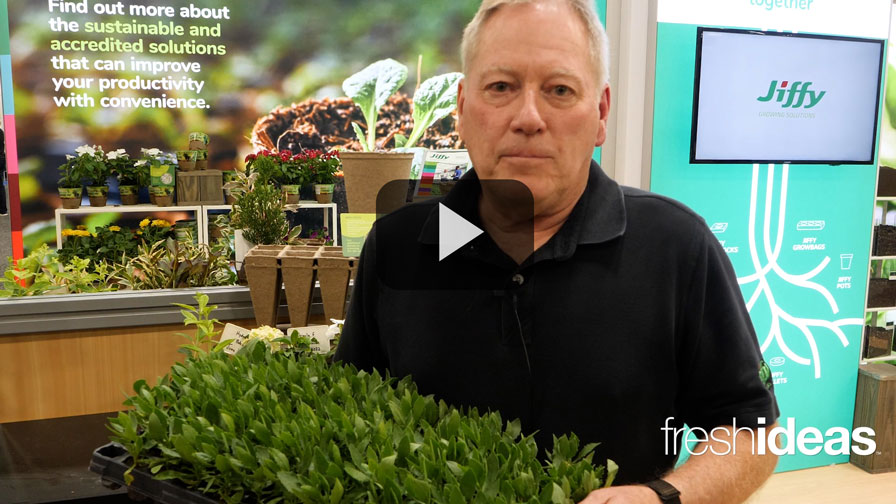Why Logic May Be The Best Defense Against Q-Biotype Whitefly

Bemisia tabaci, Adult whitefly
I am sure I’m not the only one who sees the irony in the current situation we are faced with regarding pest control. Growers who use chemical pesticides have entered into a time when you are effectively damned if you do, damned if you don’t. Let me explain.
While the whitefly problem is causing stress in the growing and scientific communities, we continue to see retailer and statewide bans on neonicotinoids. Most offshore producers of unrooted cuttings have eliminated neonicotinoids from production, to accommodate finished growers who have phased them out to comply with retailer and some state government-led mandates. But Q-Biotype whiteflies, which are not native to the U.S., may be hitching a ride into the country on these young plant shipments. It’s impossible to know, as they are too small to detect at the point of entry.
Yet the restrictions on neonicotinoids may be one of the reasons why we have seen the first major resurgence in Q-Biotype whiteflies in years, and the first-ever detections in the landscape. There are now fewer chemical controls available to combat Q-Biotype whiteflies, which develop and maintain resistance faster and longer than their B-Biotype counterparts. Neonicotinoids are one class of chemicals that have been effective on Q-Biotype, and without this class available in crop rotations, not to mention the time it takes to develop new active ingredients, growers’ pest control solutions are handicapped.
Luckily, the National Whitefly Taskforce is working to develop new recipes for preventive control, which include both chemical and biological products. However, offshore farms are still limited to using exclusion, heavy scouting, sanitation, and chemical and biological pesticides, as they’re not able to use biological control agents like beneficial insects, due to the strict zero-tolerance policy for insects of any kind in their shipments at the border.
We have also heard reports that finished growers using sachets that disperse beneficial insects have had to remove them from their finished crops before shipping to big box stores, because retailers don’t want insects on plants at retail, and they are concerned that sales will be impacted. This adds more stress, labor, cost, and frustration for growers.
Meanwhile, the extensive efforts growers have gone through to eliminate neonicotinoids for the sake of pollinator health may seem like they are all for naught when unfortunate things happen like the massive bee poisoning in South Carolina, where officials sprayed Naled — an organophosphate insecticide that’s toxic to bees — to kill potentially Zika-virus-carrying mosquitos.
Combined, all of these things might make you feel that the cards are stacked against you. But there are logical solutions.
1. Spread whitefly awareness. If you see something, say something. Call an expert if you’re seeing increased whitefly pressure and resistance to pesticides, and follow management recommendations at http://goo.gl/E5w4mC. Educate your staff and customers, as well.
2. Practice IPM. It’s going to take an integrated approach to combat pests responsibly, which will require both time and financial investments to train your team on resistance management and using biocontrols effectively. Consider attending the 2017 U.S. Biocontrols Conference in March.
3. Promote your practices. Work with biocontrols manufacturers, consultants, and tag and packaging companies to develop messaging about what biological control agents are and why they are important. Educate retailers about why you’re using them and start an in-store consumer campaign about what these insects do and why they’re good bugs and not bad bugs.
4. Give consumers more credit. If they see that we’re using natural means to target and reduce our use of chemicals, most will chill out about seeing bugs on their plants — and they’ll probably even think IPM is cool and want to know more. Take the example of Walmart’s distribution of “ugly fruit” as an inspiration. A consumer education campaign opened consumers’ minds about why fruit might not look perfect, due to weather damage. They were let in on a secret, and it created an acceptance in their minds and shopping baskets for imperfect produce. Now, it’s become a thing, and in some cases, ugly fruit is actually selling at higher prices than non-ugly fruit. We can do the same with education on biocontrols: Develop an understanding to create acceptance.
Ultimately, it’s up to us to use the available resources to change our circumstances. We have to go outside our comfort zones to change the message and create an acceptance and awareness for our production practices. Let’s work together to make it happen.










